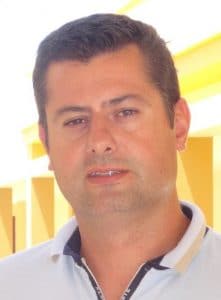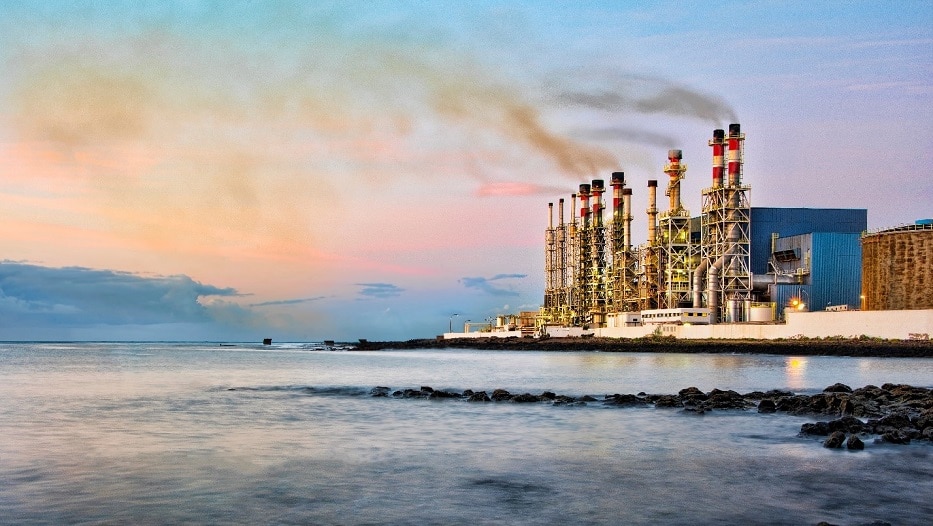Adán Cubillo Hurtado | 07/04/2022
Water use is one of the main issues of producers and institutions, who must face factors that cause water scarcity such as climate change, desertification and population growth. The implementation of desalination plants now represents a real possibility of valuing this natural resource, based on sea water and brackish water. Having embarked on a profound technological transition, the desalination industry seeks more effective and sustainable solutions to guarantee demand from the population, industry and agricultural community. Baltasar Peñate, head of the Water Department of the Canary Islands Institute of Technology (Instituto Tecnológico de Canarias [ITC]), tells us about the challenges and opportunities facing the sector.
Proper water supply is a critical factor in ensuring public health and well-being, maintaining daily activity, and boosting a region’s economy. Therefore, water planning in a region must be effective and face the many challenges that the current situation imposes on it. One of the most promising techniques in the governance of this basic resource, and which is strengthened thanks to innovation and sustainability, is water desalination, an industrial process that consists in taking as raw material a source of salt water from which that content in salt is extracted. “It’s achieved today fairly efficiently, and always with the ultimate objective of obtaining water that we can use for the consumption of the population or for tourism, industrial and agricultural use. It’s a pretty important industry nationally, because several Spanish areas, especially on the Mediterranean coast, the Canary Islands and the Balearic Islands, cannot meet their water needs with conventional resources and they go to desalination to have an alternative that will allow them to meet that demand”, says Baltasar Peñate, Head of the Water Department of the Canary Islands Institute of Technology (ITC), a public company of the Government of the Canary Islands attached to the Ministry of Economy, Knowledge and Employment.
This solution is also very relevant on a global scale. Today, “there are about 100 million cubic meters per day of production capacity in the world, so many governments introduce desalination into their hydrological planning,” says the expert. Countries at the forefront of installed capacity, such as Saudi Arabia, Spain, Israel, the United States, and Australia, can produce tens of thousands of cubic meters per day. Others such as Morocco, South Africa and Mexico are starting to roll out their first large-scale desalination plants. “Developing countries are turning to international cooperation to be able to meet their water demand by means of desalination. At the ITC, for example, we transfer knowledge to West Africa, trying to introduce small-scale desalination in isolated areas by means of international cooperation funds or European projects,” he says.
Governing and emerging technologies
The reasonable cost of implementation and exploitation has made desalination a means to address water scarcity and balance expected consumption. “Depending on which methods are used, these costs are more or less bearable by the country. Today, the most widely exploited technology internationally is reverse osmosis,” says Peñate, alluding to the semipermeable membrane filtration technique, which is “completely replacing the priority or primary technologies of the last century, such as distillation.”
The main strengths of reverse osmosis are:
- Minimal energy consumption –with the cost savings that come with it.
- Extended technology –making it easy to find materials and supplies in any environment on the planet.
- Highly modular infrastructure –making it possible to obtain desalted water with low risk of breakage and minimal human intervention.
Its high reliability and efficiency have made it the most widespread technology on a global scale, and that is why many of the efforts of the main research centers are focused on improving this process. At the ITC, we are told of two objectives that they are currently working on from their Living Lab in desalination: energy efficiency and the reduction of the ‘dirtying’ of the membranes, which is a significant problem for the management of desalination plants, which are periodically forced to stop the activity to execute cleaning protocols, which impacts the operating costs. “We are also working on brine valuation projects, to obtain value-added by-products and alleviate their impact on the marine environment,” he adds.
Industry momentum points to the consolidation of this reverse technology, although hybrid solutions are also being tested. “An osmosis modification trying to dilute high concentration water, or some membrane-based solution but modifying reversible electrodialysis. The truth is that the list of emerging technologies is not very large, and many are aborted in early trials. But there are some not-so-emerging solutions, with market proposals, such as membrane distillation, already used on a small scale, and linked to heat sources. Although it has been connected from the start with solar power, it does not have a high efficiency ratio and has quite high implementation costs,” he acknowledges.
Desalination industry uses and challenges
Desalted water is being introduced in almost every use that daily activity requires, from recreational to industrial. “Spain is the country in the world that uses it most, per irrigated hectare in agriculture. That means that its leverage potential is extremely high,” says Baltasar Peñate, adding that the handicaps of its development lie in the required investment and raw material. Energy costs cause desalinated water prices to fluctuate. “The public component is very important here, since you have to guarantee supply in quality, quantity and price,” he says.
The challenges facing companies in the industry are clearly aligned with the objectives pursued by their research and development lines:
- Reduce carbon footprint. “Work is being done on ways to try to make the process more efficient. Increase conversion, i.e., increase the rate of desalinated water per cubic meter of seawater or brackish water we put in.” The use of renewable energy for the exploitation of desalination plants will also play a key role in this challenge.
- Environmental impact. “Desalination creates a spill called brine, and its high salinity is not easily managed. It’s not easy to reuse or retrieve materials from it today, though it’s something that is being researched.” So far, the brine was returned to the sea or to a physical environment that allowed it to be absorbed, which generates an impact on the medium in the form of an increase in salinity or pH, a change in temperature or alteration of the conditions of marine biology.
- The circular economy. It is about making this process more sustainable, if possible, by reducing raw materials and reusing those by-products generated by the process.
With these objectives, the ITC has created the DESAL+ Living Lab ecosystem to host the most recent desalination research. “We offer a physical space open to experimentation, with facilities and services for seawater supply, brine pouring, small-scale desalination plants, etc., as well as a virtual space where we can work from a multidisciplinary approach,” says Peñate. Within this platform, the facilities at Pozo Izquierdo in Gran Canaria are included, “an experimental area shared with other types of projects (renewable energy, biotechnology, mechanical engineering, etc.). In this space we seek to develop small-scale desalination solutions and improvements that can be transferred to the fabric of business. Through our facilities, in the almost 30 years of life that the ITC has, they have gone from 15 to 20 different desalination solutions, making use of renewable sources in some of them. Today we are focusing on those improvements that can quickly result in process optimization.”
In this context, a project funded by the Gran Canarian Government called DESAL+- STARTUPS stands out. “It has allowed us to fund the purchase of two emerging solutions that we will be able to test here at our position facilities. This tender based on pre-commercial public purchase has allowed us to partner with two Spanish foundations (Tecnalia and Eurecat), and with them we will work on the first pilots of two emerging solutions: one based on capacitive deionization training (CDI) and the other on a hybrid of reverse osmosis and this deionization,” he concludes.
Article Collaborator:
 A Doctor in Industrial Engineering from the University of Seville (2010), since 2000 he has been carrying out his professional activity as head of the Water Department and researcher in the field of water treatment within the Canary Islands Institute of Technology (ITC). His specialty is water desalination, specifically electrodialysis, reverse osmosis, as well as the combination with renewable energy. His career is summarized in the leadership and coordination of European, national and regional R&D&I projects and contracts related to desalination, especially using renewable energy.
A Doctor in Industrial Engineering from the University of Seville (2010), since 2000 he has been carrying out his professional activity as head of the Water Department and researcher in the field of water treatment within the Canary Islands Institute of Technology (ITC). His specialty is water desalination, specifically electrodialysis, reverse osmosis, as well as the combination with renewable energy. His career is summarized in the leadership and coordination of European, national and regional R&D&I projects and contracts related to desalination, especially using renewable energy.
He begins his journey as a project technician in the area of water treatment technologies. In the coordination and participation in R&D+i projects, he has carried out, among many tasks, technical-financial management, coordination of scientific tasks and technical participation in regional, European and development cooperation projects (V, VI, VII Framework Programs of the European Commission, Horizon 2020, MEDA, INCOMED, DGTREN, INTERREG, AZAHAR, NATIONAL PLAN, etc.) related to the supply of drinking water (desalting and pumping) and energy to isolated areas using renewable energy; sustainable water management, the treatment and productive use of wastewater, and, finally, projects intended for the evaluation and protection of water quality.
He has extensive experience in the execution of international cooperation projects: He has actively participated in tasks relating to governance, access to water using technologies and training and knowledge transfer in numerous countries (Morocco, Mauritania, Senegal, Cape Verde, Tunisia, Egypt, Jordan, Chile, Peru). He is currently the technical coordinator of the DESAL+ LIVING LAB Platform.





